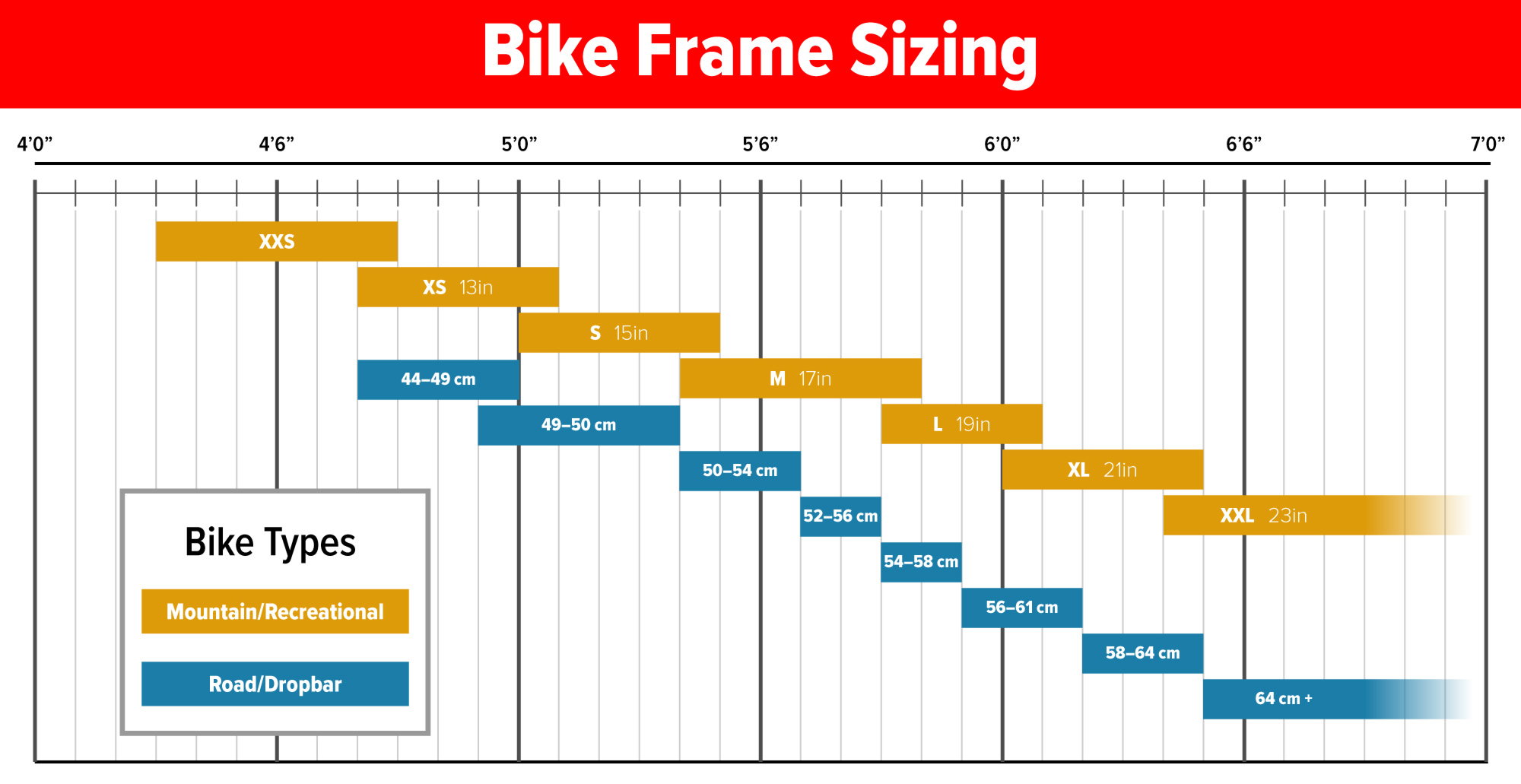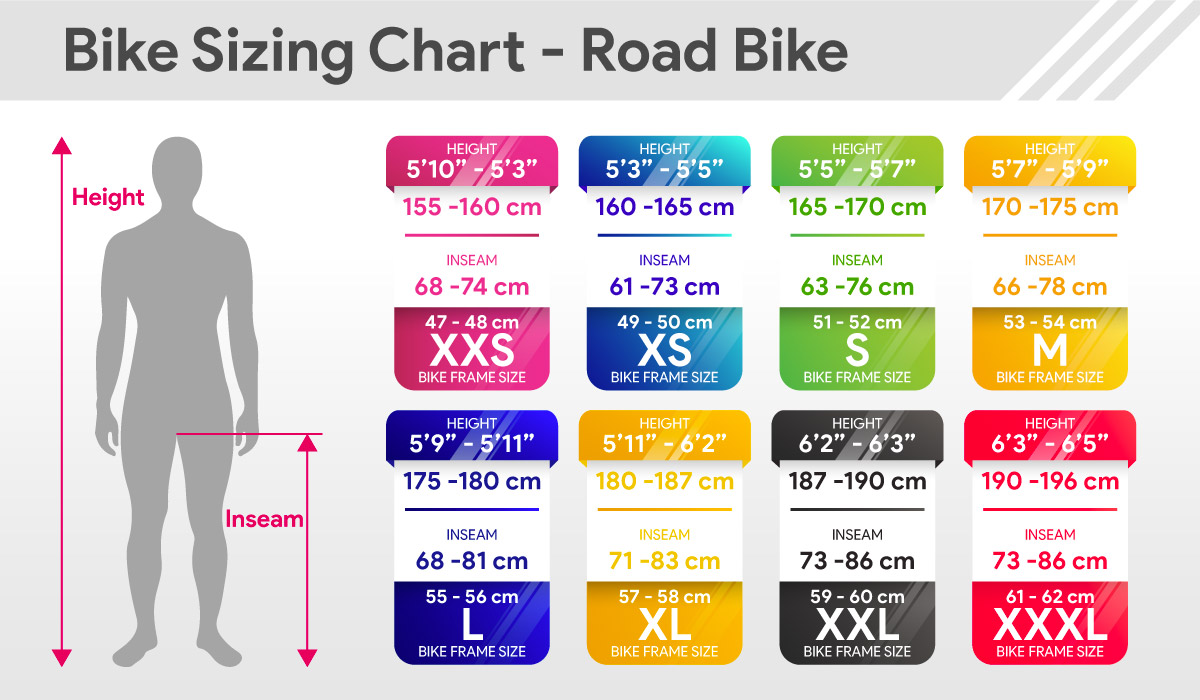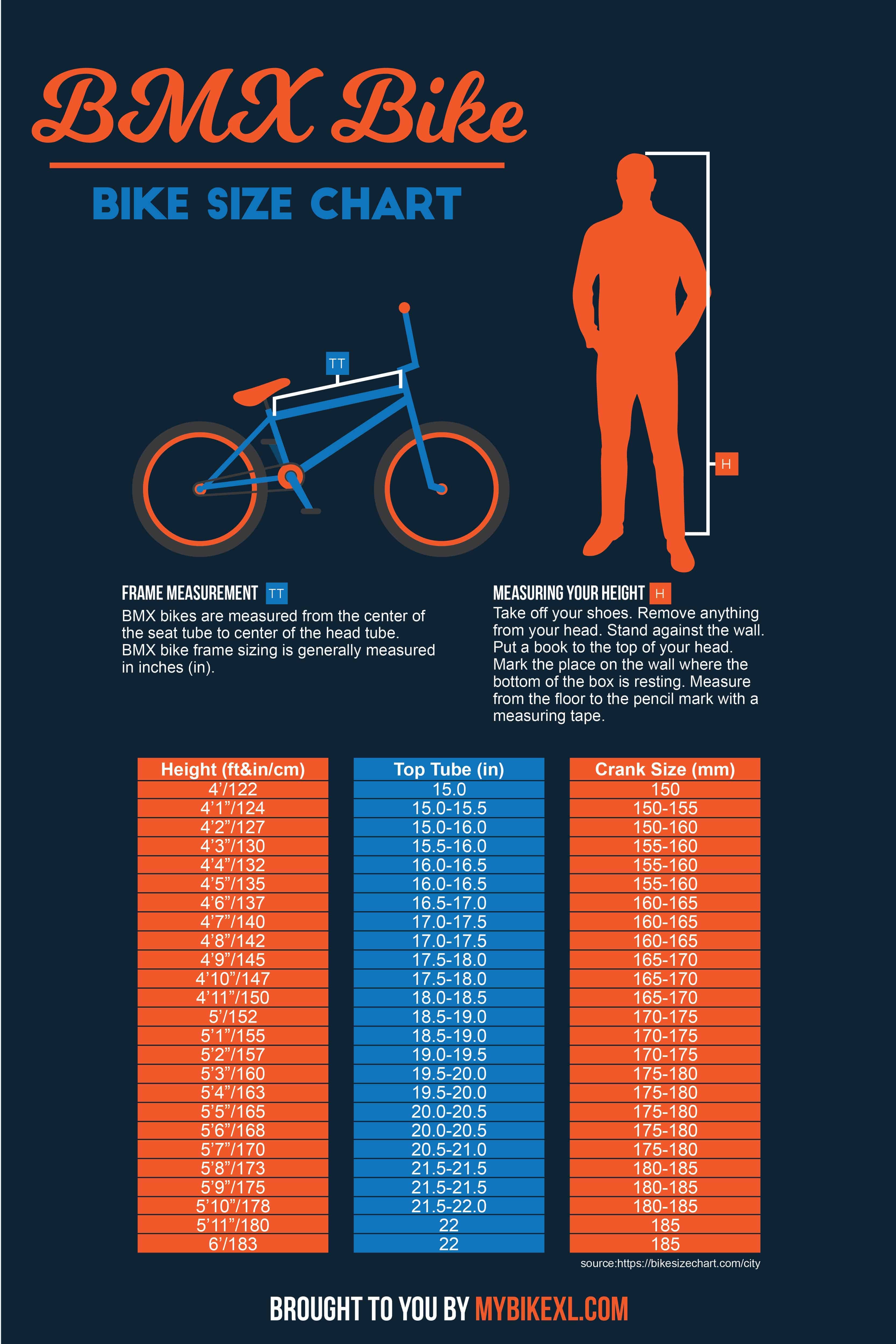Understanding Bike Frame Size Charts: A Beginner’s Guide
Bike frame size charts are an essential tool for finding the perfect fit for your ride. These charts provide a standardized way to measure and compare different bike frames, ensuring that you get a bike that is tailored to your body and riding style.
A typical bike frame size chart will include measurements such as standover height, seat tube length, and top tube length. These measurements are used to determine the ideal frame size for a rider based on their height, inseam, and arm length. By using a bike frame size chart, you can ensure that your bike is properly fitted to your body, which can improve performance, reduce discomfort, and prevent injuries.
There are many different types of bike frame size charts available, each with its own unique characteristics and features. For example, some charts may include additional measurements such as wheel size and tire width, while others may provide more detailed information on the bike’s geometry and design.
Some popular bike manufacturers, such as Trek and Specialized, provide their own bike frame size charts that are specific to their brand and models. These charts can be a valuable resource for riders who are looking for a precise fit and want to ensure that their bike is properly sized for their body.
When using a bike frame size chart, it’s essential to follow the manufacturer’s instructions and guidelines carefully. This will ensure that you get an accurate measurement and find the perfect fit for your ride. Additionally, it’s always a good idea to consult with a professional bike fitter or mechanic if you’re unsure about how to use a bike frame size chart or need help finding the perfect fit.
By understanding how to use a bike frame size chart, you can take the first step towards finding the perfect fit for your ride. Whether you’re a beginner or an experienced rider, a properly fitted bike can make all the difference in your cycling experience.
Measuring Your Body: How to Determine Your Ideal Frame Size
To determine your ideal frame size, you’ll need to take a few key measurements of your body. These measurements will help you find a frame size that fits you perfectly, ensuring a comfortable and efficient ride.
The first measurement you’ll need to take is your inseam. This is the distance from the floor to the crotch of your pants. To take this measurement, stand against a wall with your feet shoulder-width apart and your back straight. Place a book or other flat object between your legs, level with the crotch of your pants. Measure the distance from the floor to the top of the book. This is your inseam.
Next, you’ll need to measure your arm length. This is the distance from the center of your back to the tip of your middle finger. To take this measurement, stand up straight with your arms at your sides. Measure the distance from the center of your back to the tip of your middle finger.
Finally, you’ll need to measure your height. This is the distance from the floor to the top of your head. To take this measurement, stand up straight against a wall and measure the distance from the floor to the top of your head.
Once you have these measurements, you can use a frame size bike chart to determine your ideal frame size. These charts typically include a range of measurements, including inseam, arm length, and height. By matching your measurements to the chart, you can find a frame size that fits you perfectly.
It’s also important to consider your riding style and preferences when choosing a frame size. If you’re a more aggressive rider, you may prefer a smaller frame size for better handling and maneuverability. On the other hand, if you’re a more casual rider, you may prefer a larger frame size for increased comfort and stability.
By taking the time to measure your body and consult a frame size bike chart, you can find a frame size that fits you perfectly and ensures a comfortable and efficient ride.
Frame Size vs. Wheel Size: What’s the Difference?
When it comes to choosing the right bike frame size, many riders get confused about the relationship between frame size and wheel size. While both are important factors in determining the overall fit and ride of the bike, they serve different purposes and have distinct effects on the bike’s performance.
Frame size refers to the size of the bike’s frame, which is typically measured in inches or centimeters. It’s the distance from the center of the bottom bracket to the top of the seat tube. Frame size is critical in determining the bike’s fit, as it affects the rider’s position on the bike and the overall comfort and efficiency of the ride.
Wheel size, on the other hand, refers to the diameter of the bike’s wheels. Wheel size can vary significantly, ranging from 26 inches to 29 inches or more. Wheel size affects the bike’s rolling resistance, stability, and overall handling. A larger wheel size can provide a smoother ride and better stability, while a smaller wheel size can make the bike more agile and responsive.
The relationship between frame size and wheel size is complex, and it’s not always easy to determine the perfect combination. However, as a general rule, a larger frame size typically requires a larger wheel size to maintain the bike’s stability and handling. Conversely, a smaller frame size can accommodate a smaller wheel size, which can improve the bike’s agility and responsiveness.
For example, a road bike with a large frame size (e.g., 58cm) may require a wheel size of 700c or 29 inches to maintain stability and handling. On the other hand, a mountain bike with a smaller frame size (e.g., 16 inches) may accommodate a smaller wheel size (e.g., 26 inches) to improve agility and responsiveness.
When using a frame size bike chart, it’s essential to consider the wheel size and how it affects the bike’s overall fit and ride. By taking into account both frame size and wheel size, riders can find the perfect combination that suits their riding style and preferences.
Real-World Examples: How to Use Frame Size Charts for Popular Bikes
Now that we’ve discussed the basics of frame size charts and how to use them, let’s take a look at some real-world examples of how to use these charts for popular bikes. We’ll examine the frame size charts for the Trek Domane and the Specialized Roubaix, two popular road bikes that are known for their comfort and performance.
The Trek Domane frame size chart is a great example of how to use a chart to find the perfect fit. The chart includes measurements for standover height, seat tube length, and top tube length, making it easy to determine the ideal frame size based on your body measurements. For example, if you have a standover height of 30 inches and a seat tube length of 20 inches, the chart recommends a frame size of 56cm.
The Specialized Roubaix frame size chart is another great example of how to use a chart to find the perfect fit. The chart includes measurements for standover height, seat tube length, and top tube length, as well as a recommended frame size based on your body measurements. For example, if you have a standover height of 32 inches and a seat tube length of 22 inches, the chart recommends a frame size of 58cm.
When using a frame size chart, it’s essential to consider the type of bike you’re purchasing and the riding style you’ll be using it for. For example, if you’re purchasing a road bike for long-distance riding, you may want to consider a larger frame size for increased comfort and stability. On the other hand, if you’re purchasing a mountain bike for aggressive trail riding, you may want to consider a smaller frame size for improved agility and responsiveness.
By using a frame size chart and considering the type of bike and riding style, you can find the perfect fit and enjoy a comfortable and efficient ride. Remember to always consult with a professional bike fitter if you’re unsure about how to use a frame size chart or need help finding the perfect fit.
In addition to using a frame size chart, it’s also essential to consider the wheel size and how it affects the bike’s overall fit and ride. A larger wheel size can provide a smoother ride and better stability, while a smaller wheel size can make the bike more agile and responsive. By considering both frame size and wheel size, you can find the perfect combination that suits your riding style and preferences.
Common Mistakes to Avoid When Choosing a Frame Size
When choosing a frame size, there are several common mistakes to avoid. One of the most common mistakes is relying too heavily on standover height. While standover height is an important factor in determining frame size, it’s not the only factor to consider. Other factors, such as seat tube length and top tube length, should also be taken into account.
Another common mistake is neglecting to consider riding style. Different riding styles require different frame sizes. For example, a road bike rider may require a smaller frame size for improved agility and responsiveness, while a mountain bike rider may require a larger frame size for increased stability and control.
Additionally, some riders may make the mistake of choosing a frame size based solely on their height. While height is an important factor in determining frame size, it’s not the only factor to consider. Other factors, such as inseam and arm length, should also be taken into account.
Finally, some riders may make the mistake of not considering the type of bike they are purchasing. Different types of bikes, such as road bikes, mountain bikes, and hybrid bikes, have different frame sizes and geometries. It’s essential to consider the type of bike and the riding style when choosing a frame size.
By avoiding these common mistakes, riders can ensure that they choose the right frame size for their needs. A well-fitting frame can improve performance, reduce discomfort, and prevent injuries. It’s essential to take the time to research and understand the different factors that affect frame size and to consult with a professional bike fitter if needed.
In addition to avoiding common mistakes, riders should also consider using a frame size bike chart to find the perfect fit. A frame size bike chart can provide a more accurate measurement of frame size and can help riders avoid common mistakes. By using a frame size bike chart and considering the different factors that affect frame size, riders can ensure that they choose the right frame size for their needs.
Getting a Professional Fit: When to Consult a Bike Fitter
While using a frame size bike chart can help you find the perfect fit, there are times when it’s best to consult a professional bike fitter. A bike fitter can help you optimize your riding position and ensure that your bike is properly fitted to your body.
One of the main benefits of consulting a bike fitter is that they can help you identify any issues with your riding position. For example, if you’re experiencing discomfort or pain in your back, neck, or hands while riding, a bike fitter can help you adjust your position to alleviate these issues.
A bike fitter can also help you optimize your bike’s fit to your body. They can adjust the saddle height, handlebar height, and other components to ensure that you’re in a comfortable and efficient riding position.
In addition to optimizing your riding position, a bike fitter can also help you choose the right frame size for your body. They can take into account your height, inseam, and arm length to recommend the perfect frame size for you.
When to consult a bike fitter? If you’re experiencing any discomfort or pain while riding, or if you’re unsure about how to properly fit your bike to your body, it’s a good idea to consult a professional bike fitter. They can help you optimize your riding position and ensure that your bike is properly fitted to your body.
Some common signs that you may need to consult a bike fitter include:
- Discomfort or pain in your back, neck, or hands while riding
- Difficulty maintaining a comfortable riding position
- Uncertainty about how to properly fit your bike to your body
By consulting a professional bike fitter, you can ensure that your bike is properly fitted to your body and that you’re riding in a comfortable and efficient position.
Conclusion: Finding Your Perfect Fit with a Bike Frame Size Chart
Using a bike frame size chart is a crucial step in finding the perfect fit for your ride. By taking the time to measure your body and consult a frame size chart, you can ensure that your bike is properly fitted to your body, which can improve performance, reduce discomfort, and prevent injuries.
Remember, a well-fitting frame is essential for a comfortable and efficient ride. By considering factors such as standover height, seat tube length, and top tube length, you can find a frame size that meets your needs and provides a comfortable riding position.
In addition to using a frame size chart, it’s also important to consider other factors that can affect the fit of your bike, such as wheel size and riding style. By taking a holistic approach to bike fitting, you can ensure that your bike is properly fitted to your body and provides a comfortable and efficient ride.
Don’t be afraid to consult a professional bike fitter if you’re unsure about how to properly fit your bike to your body. A bike fitter can provide valuable guidance and help you optimize your riding position, which can improve your overall cycling experience.
By following the tips and guidelines outlined in this article, you can find the perfect fit for your ride and enjoy a comfortable and efficient cycling experience. Remember to always prioritize your safety and comfort, and don’t hesitate to seek professional advice if you’re unsure about any aspect of bike fitting.
Conclusion: Finding Your Perfect Fit with a Bike Frame Size Chart
In conclusion, using a bike frame size chart is a crucial step in finding the perfect fit for your ride. By taking the time to measure your body and consult a frame size chart, you can ensure that your bike is properly fitted to your body, which can improve performance, reduce discomfort, and prevent injuries.
Remember, a well-fitting frame is essential for a comfortable and efficient ride. By considering factors such as standover height, seat tube length, and top tube length, you can find a frame size that meets your needs and provides a comfortable riding position.
Don’t be afraid to consult a professional bike fitter if you’re unsure about how to properly fit your bike to your body. A bike fitter can provide valuable guidance and help you optimize your riding position, which can improve your overall cycling experience.
By following the tips and guidelines outlined in this article, you can find the perfect fit for your ride and enjoy a comfortable and efficient cycling experience. Remember to always prioritize your safety and comfort, and don’t hesitate to seek professional advice if you’re unsure about any aspect of bike fitting.
In addition to using a frame size chart, it’s also important to consider other factors that can affect the fit of your bike, such as wheel size and riding style. By taking a holistic approach to bike fitting, you can ensure that your bike is properly fitted to your body and provides a comfortable and efficient ride.
By taking the time to find the perfect fit for your ride, you can enjoy a more comfortable and efficient cycling experience. Whether you’re a seasoned cyclist or just starting out, using a bike frame size chart can help you find the perfect fit and take your cycling to the next level.







